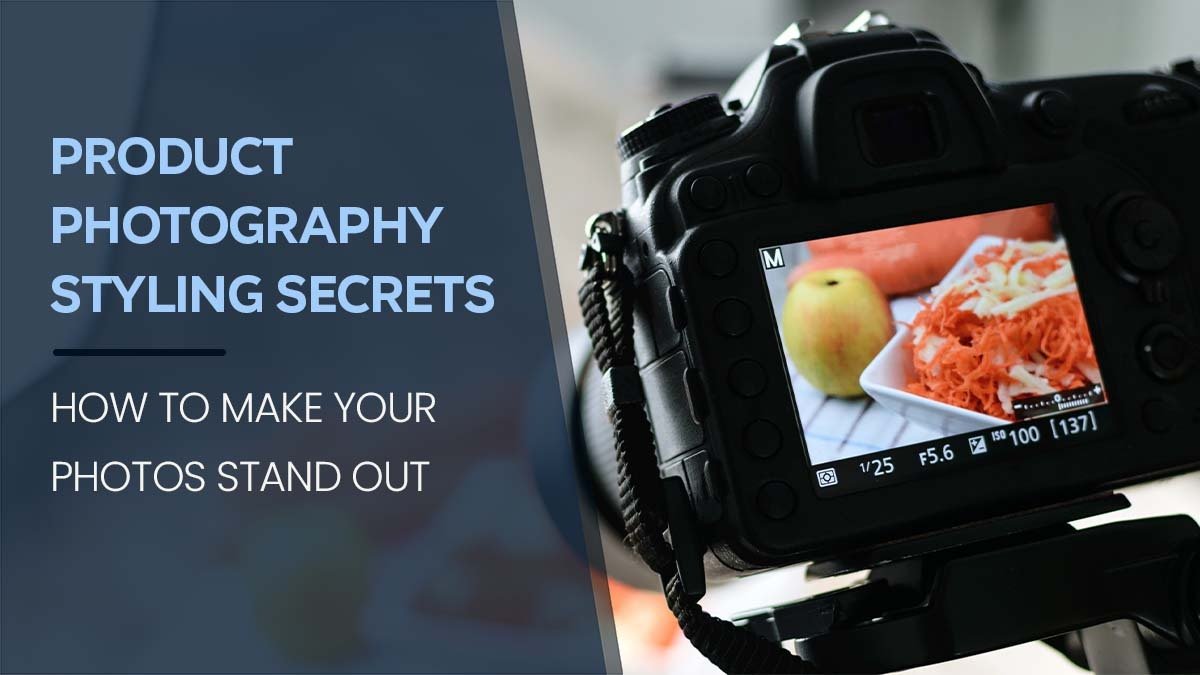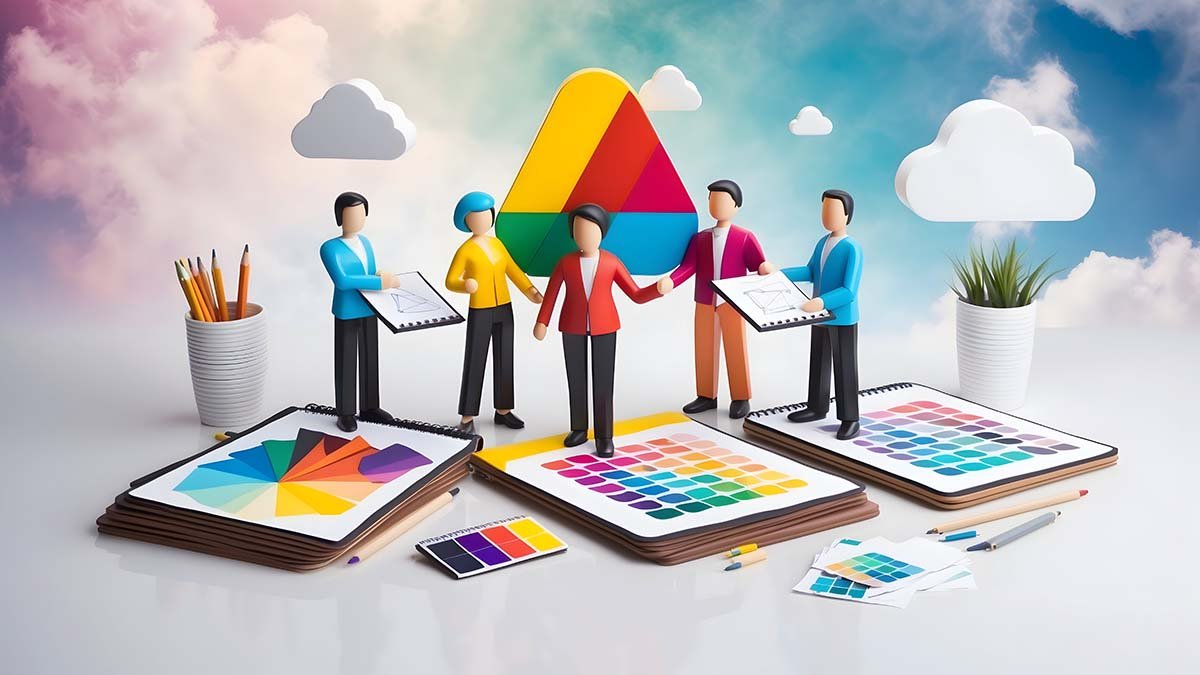Product Photography Styling Secrets | How to Make Your Photos Stand Out
Today, we’re diving into the interesting world of photography styling. Have you ever looked at a photo and felt a story come to life? That’s the magic of photography styling. It’s not just about snapping a picture, it’s about arranging elements in a way that tells a story, excites emotions, and captures the viewer’s attention.
Photography styling is the secret ingredient that transforms ordinary photos into extraordinary visuals. Whether you’re a professional photographer, a social media handler, or someone who loves taking pictures for fun, understanding photography styling can significantly enhance your images. In this detailed product photography styling guide, we’ll walk you through the basics, share some handy tips, and give you the tools to make your photos stand out. So, let’s get started and unlock the key to visual storytelling!

What is Photography Styling?
Photography styling is the art of arranging objects, people, or scenes in a photograph to create a specific look or tell a story. It involves selecting and arranging props, choosing the right lighting, and setting up the scene in a way that complements the subject of the photo. Good styling can turn a simple image into a powerful visual narrative and for that you should know best product photography ideas.
Why is Photography Styling Important?
Photography styling is important because it adds depth, meaning, and appeal to your photos. Let’s break down why it’s so important in simple terms:
Enhances Storytelling
Imagine a picture of a cozy living room. Without styling, it might just look like a room. But with the right props, lighting, and arrangement, that room can tell a story. Maybe it looks like the perfect place for a family to gather on a winter evening. Styling helps your photos tell these kinds of stories, making them more engaging and memorable.
Creates Visual Interest
A well-styled photo catches the eye. Think about scrolling through social media. What makes you stop and look at a photo? Usually, it’s something visually interesting. Photography styling helps create that interest by arranging elements in a way that’s pleasing to the eye. It makes your photos stand out in a sea of images.
Shows Professionalism
If you’re using photos for your business or personal brand, good styling is essential. It shows that you pay attention to details and care about quality. Well styled photos look polished and professional, which can help build trust with your audience. Whether you’re selling products, offering services, or simply sharing your work, professional looking photos make a better impression and help you in product photography marketing.
Communicates Your Vision
Photography is a form of expression. Good styling helps you communicate your unique vision and style. It allows you to show the world how you see things and what’s important to you. Whether you love bright, cheerful images or dark, moody ones, styling helps you convey that aesthetic clearly.
Adds Emotional Impact
Photos have the power to excite emotions. A well styled photo can make people feel happy, nostalgic, excited, or even sad. By carefully choosing and arranging elements, you can enhance the emotional impact of your photos. This makes your images more powerful and meaningful.
Supports Branding
For businesses, consistent styling helps boost your brand. Think about brands like Apple or Starbucks. Their photos have a distinct look and feel that’s instantly recognizable. By using consistent styling, you can create an attractive brand image that people will remember.
Improves Communication
Sometimes, words aren’t enough to explain something. Well styled photos can communicate complex ideas or concepts quickly and effectively. For example, if you’re a food blogger, a beautifully styled photo of a dish can instantly tell your audience how delicious and inviting it is, without needing a lot of words.
Boosts Engagement
In the age of social media, engagement is key. Well-styled photos are more likely to get likes, shares, and comments. They grab attention and encourage people to interact with your content. This can help you grow your audience and reach more people.
Helps with Marketing
Good photography is a powerful marketing tool. Whether you’re selling products online, promoting events, or showcasing your work, well styled photos can attract potential customers and clients. They make your offerings look more appealing and can drive sales and interest.
Basic Elements Of Photography Styling
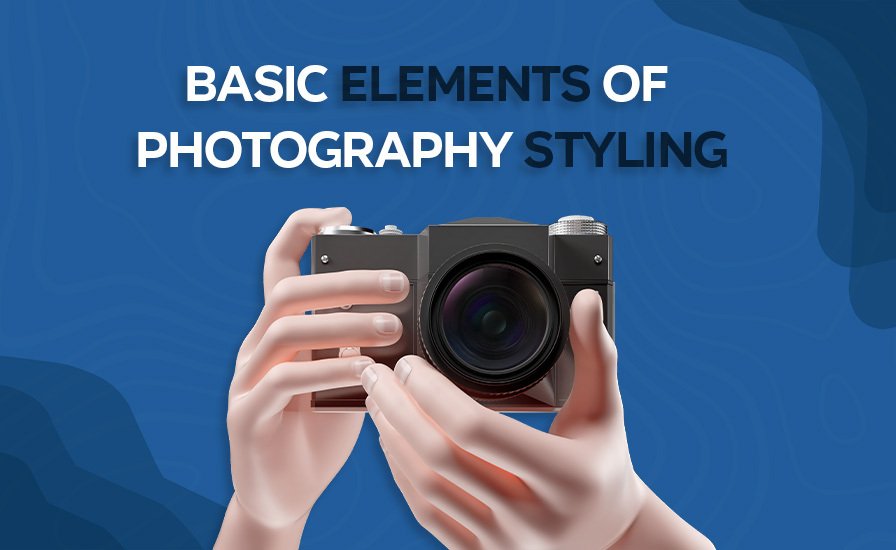
To get started with the product photography style guide, it’s important to understand the basic elements that make up a well styled photo. These elements include composition, color, props, lighting, and the subject.
Composition
Composition refers to how the elements in a photo are arranged. A good composition guides the viewer’s eye through the image and emphasizes the most important parts. Here are some basic composition techniques for product photography.
- Rule of Thirds: Divide your frame into a 3×3 grid. Place the main product along these lines or at their intersections.
- Leading Lines: Use lines to guide the viewer’s eye toward the main subject.
- Framing: Use natural frames, like windows or archways, to highlight the subject.
- Symmetry and Balance: Create a balanced and settled look by arranging elements symmetrically.
Color
Color plays a significant role in product photography styling. It can set the mood, draw attention, and create harmony.
- Color Harmony: Use complementary or analogous colors to create a pleasing color scheme.
- Contrast: Use contrasting colors to make your product stand out.
- Mood: Choose colors that match the mood you want to convey. For example, warm colors (reds, oranges) create a cozy feel, while cool colors (blues, greens) create a calm atmosphere.
Props
Props are objects you include in your photo to add context and interest. They should complement the main subject and enhance the story you’re trying to tell.
- Relevance: Choose props that are relevant to the story or theme.
- Simplicity: Don’t overcrowd the scene. Keep it simple and let the main subject shine.
- Placement: Arrange props thoughtfully to create a balanced and cohesive look.
Lighting
Lighting is one of the most important elements in photography. It affects the mood, tone, and overall quality of your photos.
- Natural Light: Use natural light whenever possible. It’s soft and flattering.
- Artificial Light: Use artificial lights, like studio lights or lamps, to control the lighting conditions.
- Light Direction: Pay attention to the direction of the light. Side lighting creates depth, while front lighting can make the subject look flat.
- Shadows: Use shadows to add depth and dimension to your photos.
Step-by-Step Product Photography Style Guide

Now that we’ve covered the basics, let’s go through a step-by-step guide to styling your product.
Step 1: Define Your Vision
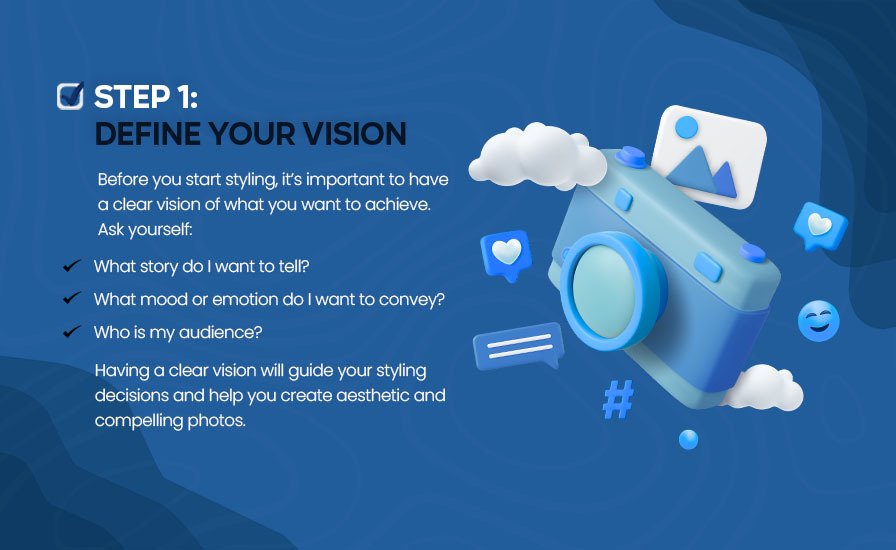
Before you start styling, it’s important to have a clear vision of what you want to achieve. Ask yourself:
- What story do I want to tell?
- What mood or emotion do I want to convey?
- Who is my audience?
Having a clear vision will guide your styling decisions and help you create aesthetic and compelling photos.
Step 2: Plan Your Shoot
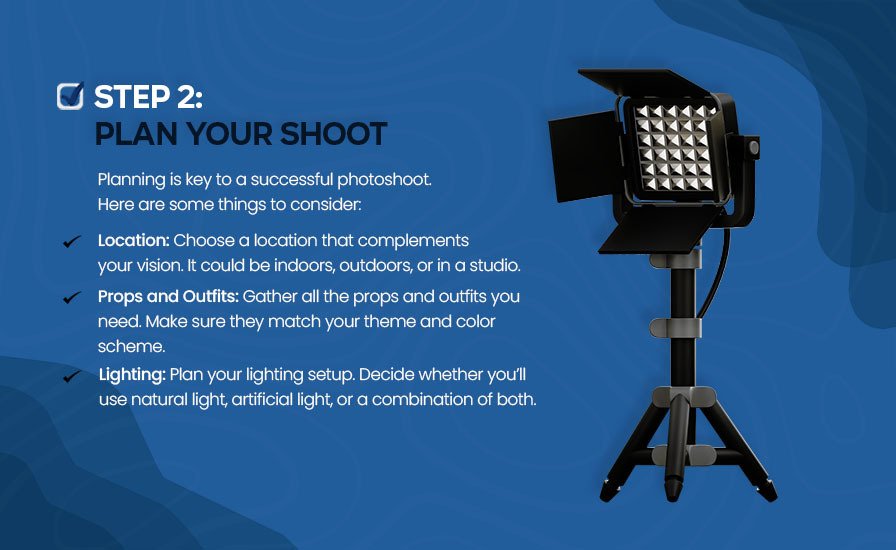
Planning is key to a successful photoshoot. Here are some things to consider:
- Location: Choose a location that complements your vision. It could be indoors, outdoors, or in a studio.
- Props and Outfits: Gather all the props and outfits you need. Make sure they match your theme and color scheme.
- Lighting: Plan your lighting setup. Decide whether you’ll use natural light, artificial light, or a combination of both.
Step 3: Set Up Your Scene
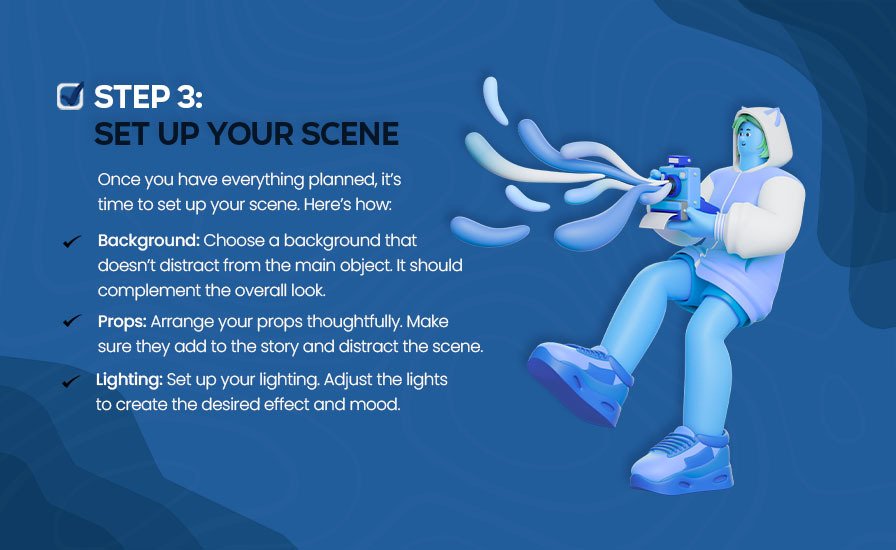
Once you have everything planned, it’s time to set up your scene. Here’s how:
- Background: Choose a background that doesn’t distract from the main object. It should complement the overall look.
- Props: Arrange your props thoughtfully. Make sure they add to the story and distract the scene.
- Lighting: Set up your lighting. Adjust the lights to create the desired effect and mood.
Step 4: Compose Your Shot
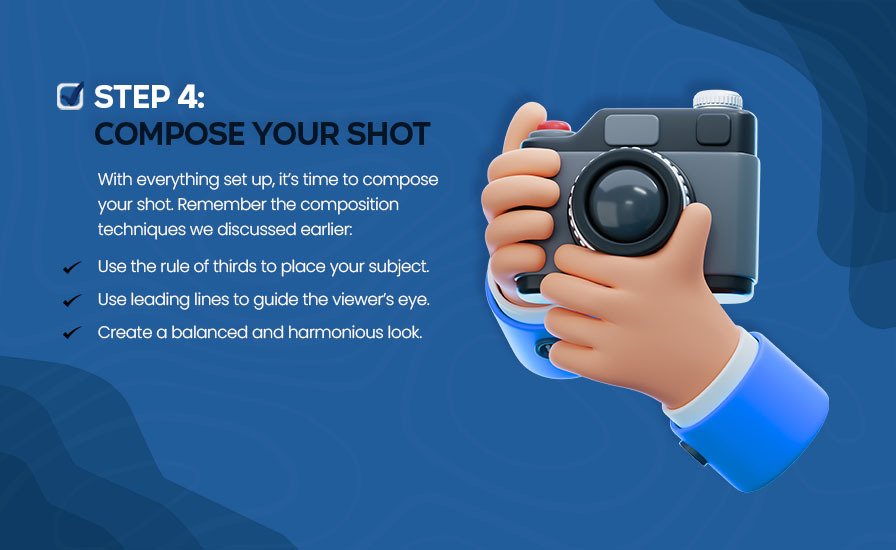
With everything set up, it’s time to compose your shot. Remember the composition techniques we discussed earlier:
- Use the rule of thirds to place your subject.
- Use leading lines to guide the viewer’s eye.
- Create a balanced and harmonious look.
Step 5: Take the Shot
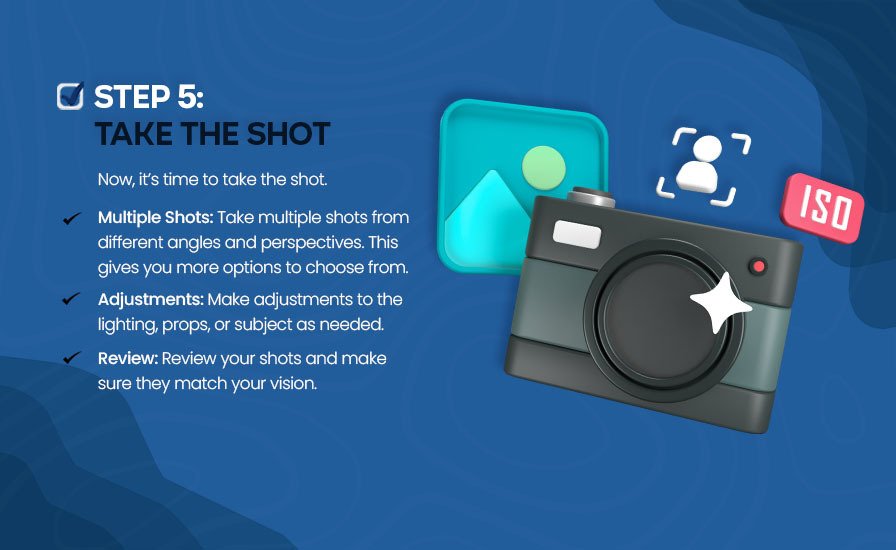
Now, it’s time to take the shot.
- Multiple Shots: Take multiple shots from different angles and perspectives. This gives you more options to choose from.
- Adjustments: Make adjustments to the lighting, props, or subject as needed.
- Review: Review your shots and make sure they match your vision.
Step 6: Edit Your Photos
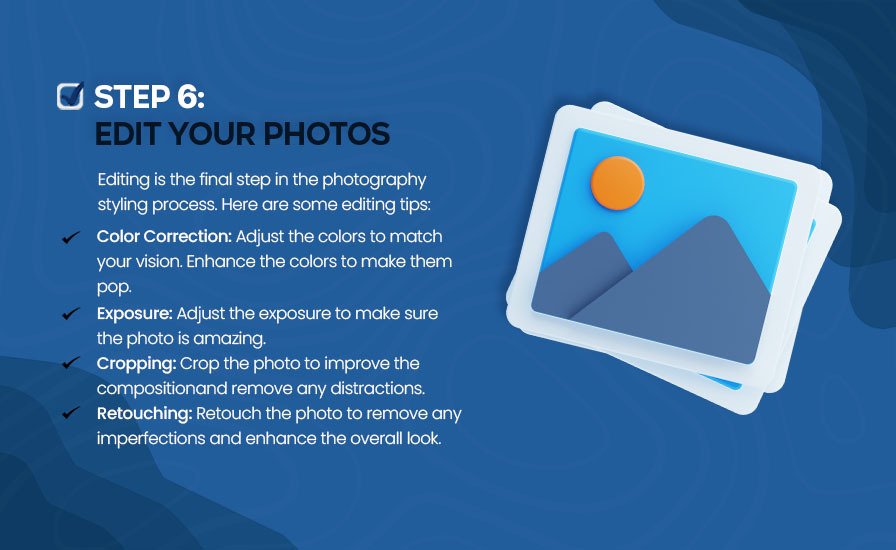
Editing is the final step in the photography styling process. Here are some editing tips:
- Color Correction: Adjust the colors to match your vision. Enhance the colors to make them pop.
- Exposure: Adjust the exposure to make sure the photo is amazing.
- Cropping: Crop the photo to improve the composition and remove any distractions.
- Retouching: Retouch the photo to remove any imperfections and enhance the overall look.
Different Product Photography Ideas
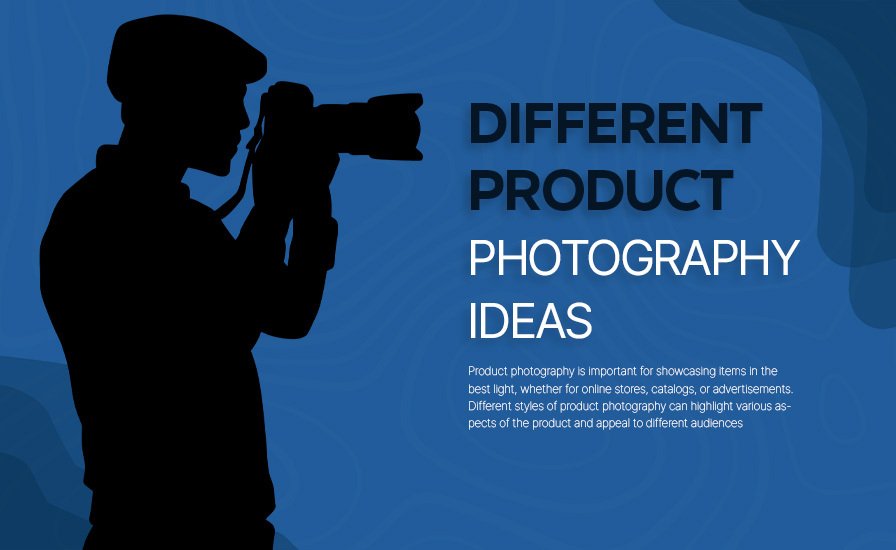
Product photography is important for showcasing items in the best light, whether for online stores, catalogs, or advertisements. Different styles of product photography can highlight various aspects of the product and appeal to different audiences. Try to inform these ideas to the best product photography agency. Let’s explore some popular styles in detail and easy to understand words.
White Background Photography
White background photography involves taking pictures of products against a plain white background. This style is clean and simple, ensuring that the focus is entirely on the product.
Common Uses
- E-commerce websites, product catalogs, and online marketplaces like Amazon and eBay.
Key Tips
- Use a white backdrop or lightbox to create a seamless background.
- Ensure even lighting to avoid shadows and maintain a clean look.
- Use post-processing to enhance the white background and make the product pop.
Lifestyle Photography
Lifestyle photography shows the product being used in real-life situations. It helps customers visualize how the product fits into their daily lives.
Common Uses
- Social media, advertisements, and brand websites.
Key Tips
- Choose locations and scenarios that reflect how the product is used.
- Include models or props to show the product in action.
- Focus on creating a natural and relatable atmosphere.
Detailed or Macro Photography
Detailed or macro photography captures close up shots of the product to show details, textures, and craftsmanship.
Common Uses
- High-end products, jewelry, electronics, and any items where detail is important.
Key Tips
- Use a macro lens to capture fine details.
- Ensure proper lighting to highlight textures and features.
- Stabilize the camera with a tripod to avoid blurriness.
Group Photography
Group photography involves taking pictures of multiple products together. This style is useful for showing product variations or collections.
Common Uses
- Gift sets, product bundles, and collections.
Key Tips
- Arrange the products in an aesthetically pleasing way.
- Use a consistent lighting setup to ensure all products are evenly lit.
- Highlight the variety or complementary nature of the products.
Flat Lay Photography
Flat lay photography involves arranging products on a flat surface and photographing them from above. This style is popular for its neat and organized appearance.
Common Uses
- Social media, blogs, and fashion or beauty products.
Key Tips
- Arrange items thoughtfully, considering color, shape, and size.
- Use a plain or textured background to add interest.
- Shoot from directly above to achieve the flat lay effect.
360-Degree Photography
360-degree photography captures a product from all angles, allowing customers to view it as if they were rotating it in their hands.
Common Uses
- Online stores, interactive catalogs, and high value items.
Key Tips
- Use a turntable to rotate the product smoothly.
- Take a series of photos from different angles.
- Use software to stitch the photos together into a 360-degree view.
Scale Photography
Scale photography shows the product in comparison to another object to give a sense of its size.
Common Uses
- Online stores, especially for products where size is an important factor.
Key Tips
- Choose a common object for comparison, like a coin, ruler, or hand.
- Ensure both the product and comparison object are clearly visible.
- Use proper lighting to avoid shadows that might obscure details.
Creative or Styled Photography
Creative or styled photography involves using artistic elements to create a visually appealing image. This style often combines props, backgrounds, and lighting effects to enhance the product.
Common Uses
- Advertising campaigns, social media, and brand storytelling.
Key Tips
- Use props and backgrounds that complement the product and brand.
- Experiment with lighting to create interesting effects.
- Focus on composition and aesthetics to make the image stand out.
Infographic Photography
Infographic photography combines product images with text, icons, and graphics to provide information and highlight features.
Common Uses
- Online stores, product packaging, and advertisements.
Key Tips
- Use clear, high quality images of the product.
- Add text and graphics to explain key features and benefits.
- Keep the design clean and easy to read.
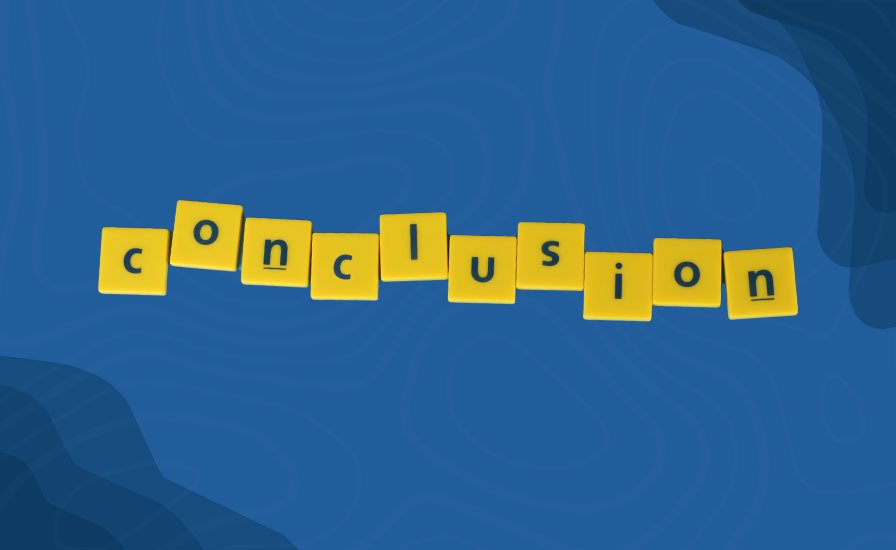
Conclusion
In conclusion, product photography is important for making products look their best and attracting customers. In this detailed product photography styling guide, Each style has its own benefits and helps show off products in unique ways.
By using these styles, we can create beautiful and effective photos that catch people’s attention and make them want to buy. Understanding these product photography ideas help us take better pictures that highlight the best features of our products.
Stay Informed, Stay Ahead
Explore our insightful articles and stay updated on the latest trends, tips, and strategies shaping the digital marketing landscape.


